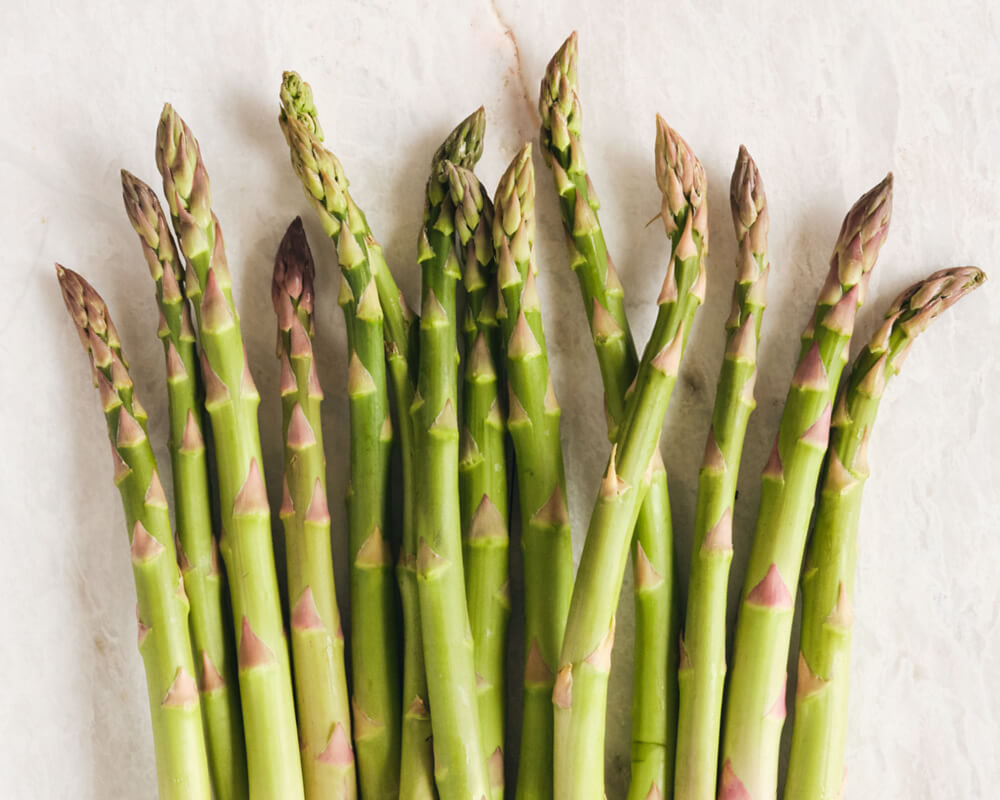
Asparagus is available year-round, but there is something special about fresh local asparagus. Along with just tasting better, its arrival marks the beginning of Washington’s bountiful produce season—one of our favorite times of year!
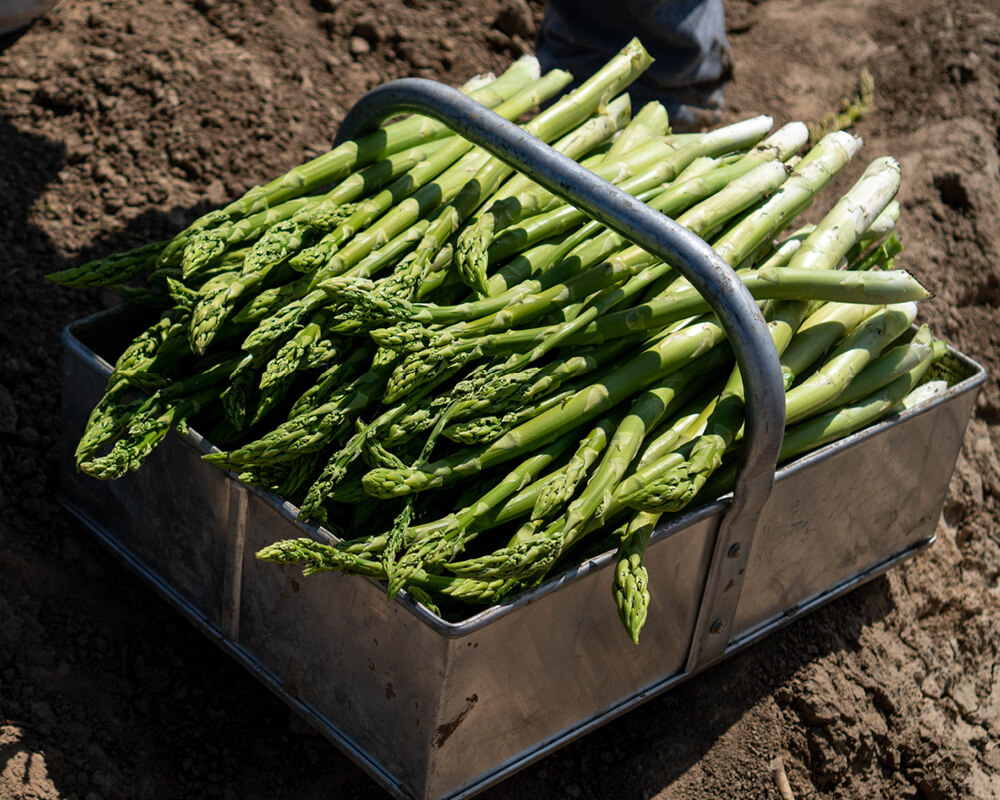
Washington Asparagus
Fun fact: Washington state is one of the largest asparagus producers in the United States.
“Washington’s mineral-rich volcanic soils, abundant water supply, warm sunny days, and cool nights provide ideal growing conditions for asparagus.” —Washington Asparagus Commission
Some of the most productive growing regions in Washington are the Columbia Basin, Yakima Valley, and Walla Walla. Metropolitan Market works with farms to get the freshest and most flavorful asparagus to you immediately after harvesting.
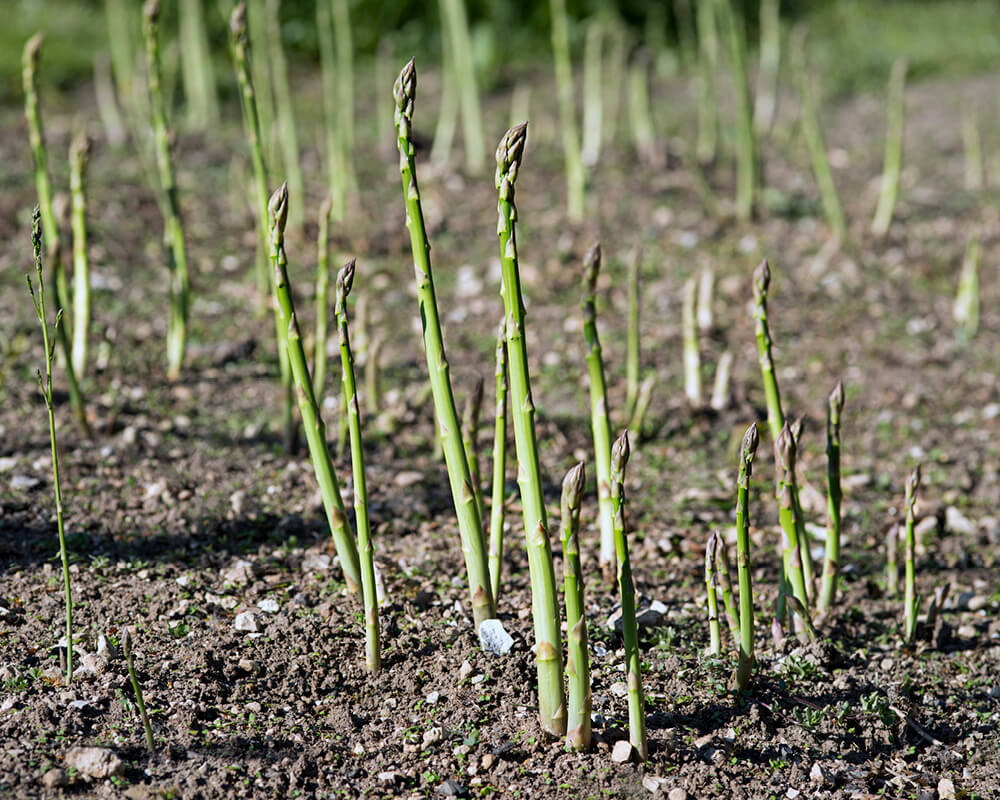
Growing and Harvesting
Asparagus farming requires patience and a tremendous amount of work. It takes up to three years for newly planted asparagus to begin producing. Once established, asparagus provide bountiful harvests for up to 15 years. Stalks grow at an astonishing rate (up to 10 inches per day!) and require daily harvesting during peak season. Every green and purple stalk you eat grew in a single day! White asparagus takes a bit longer. It’s the same plant as green, but it grows under mounded earth, preventing it from turning sunlight into green chlorophyll. In Washington, asparagus season runs from mid-April to mid-June. That’s 90+ daily harvests each year! While mechanized harvesters exist, many farmers prefer to do it by hand, one stalk at a time. The average asparagus farm is the length of 57 football fields and takes 50+ workers to get everything to the sorting house on time.
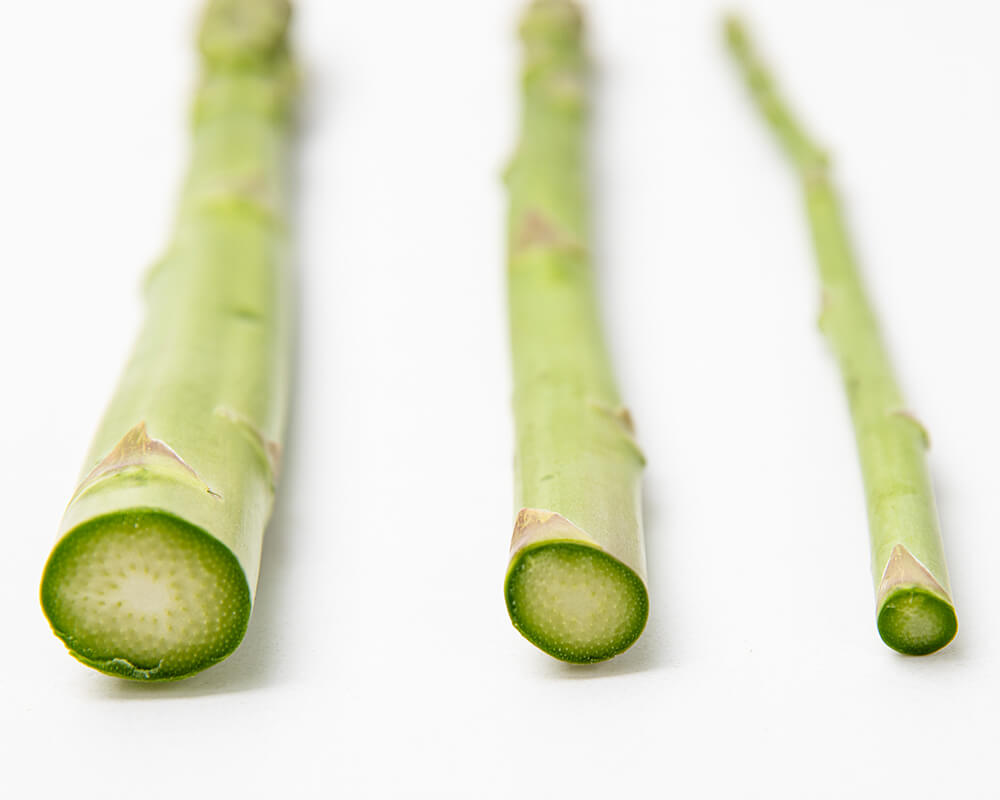
Classifications
Whether green, purple, or white, Washington classifies asparagus in one of five sizes, according to stalk diameter:
Jumbo: 13/16"
Extra Large: 10/16"
Large: 7/16"
Standard: 5/16"
Small: 3/16"
Selecting Asparagus
How do you pick the best bunch? When selecting asparagus, look for vibrant color and sturdy, odorless stalks with dry, compact tips. It’s a great sign if the asparagus stalks are upright, standing in shallow water—this prevents them from drying out and losing nutritional value. Choose smaller spears to sauté and jumbo asparagus, which can be more tender, to grill.

Keep It Fresh
Rather than toss banded and bagged asparagus directly from your shopping bag into your crisper, it's worth taking the time to store it properly. Remove the rubber band, trim the ends, and stand the asparagus in a jar with an inch of water. Use two jars, if necessary, to avoid packing them tightly together. Then refrigerate. Alternatively, wrap a damp paper towel around the bunch, place in a plastic bag, seal, and refrigerate. Both methods should keep your asparagus fresh for over a week. However, these spring beauties are best enjoyed as soon as possible as their flavor diminishes quickly over time.
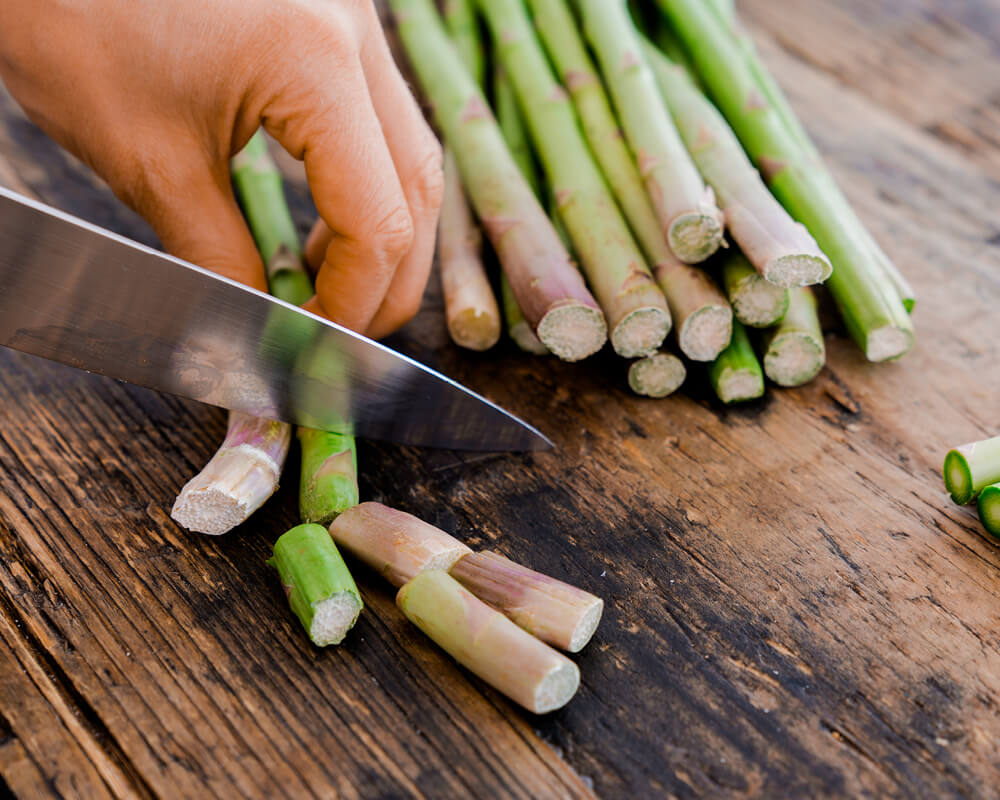
Snap or cut?
Many people have been taught to bend asparagus stalks by holding onto opposite ends and snapping off the woody bottoms. The problem is that the stalks don't always break right at the transition point from tough to tender and can result in a lot of unnecessary waste. It's better to trim thin stalks where the whitish ends transition to green. For thick asparagus, peel the the lower half of the stalks to remove the tough skin. Then trim off the ends.
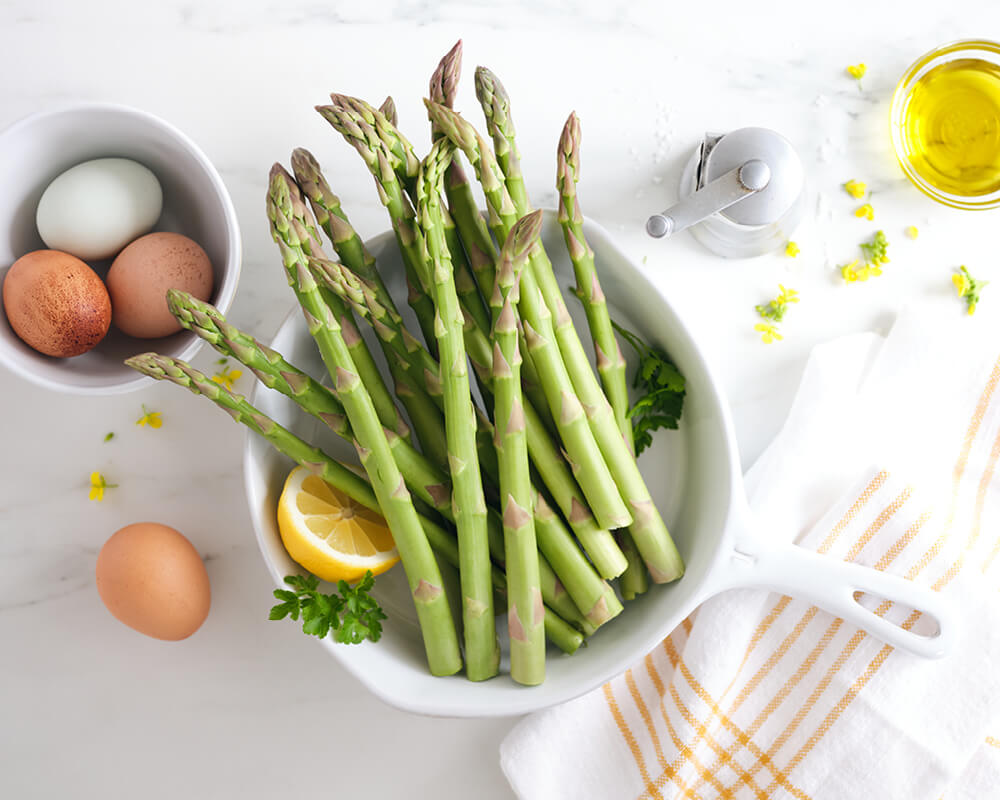
Get Cooking
There is no shortage of great applications for this delicious and versatile vegetable. Check out this collection of asparagus recipes to celebrate asparagus season!
